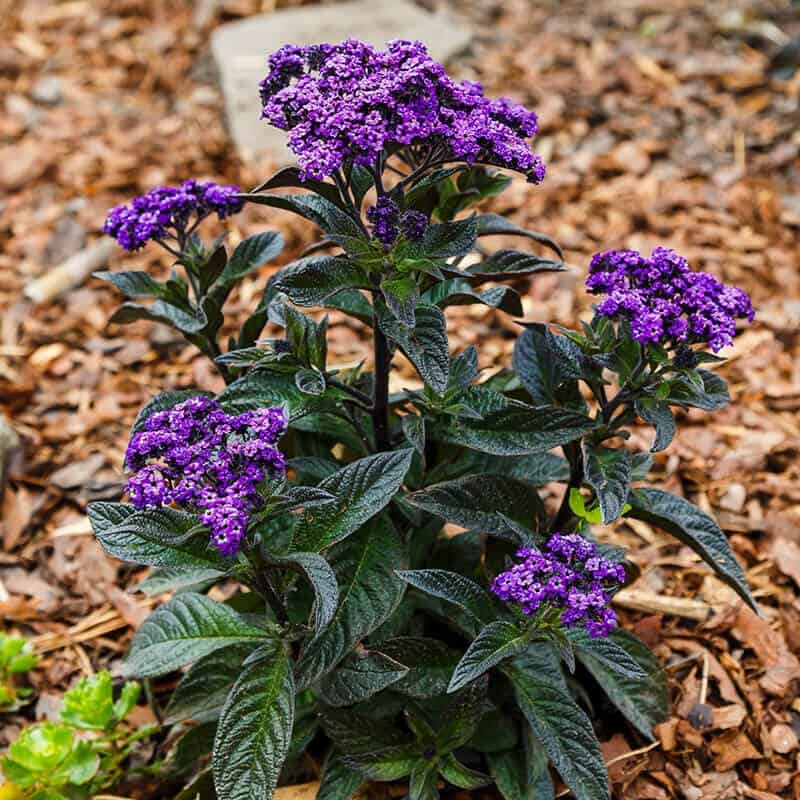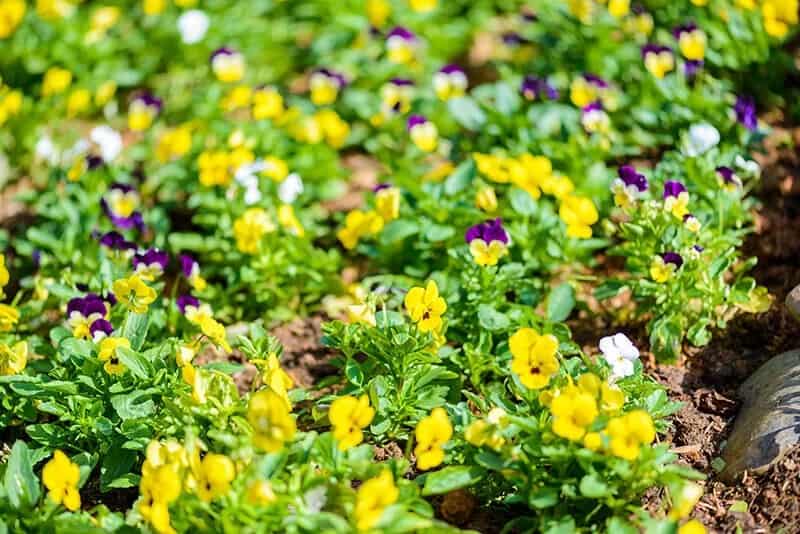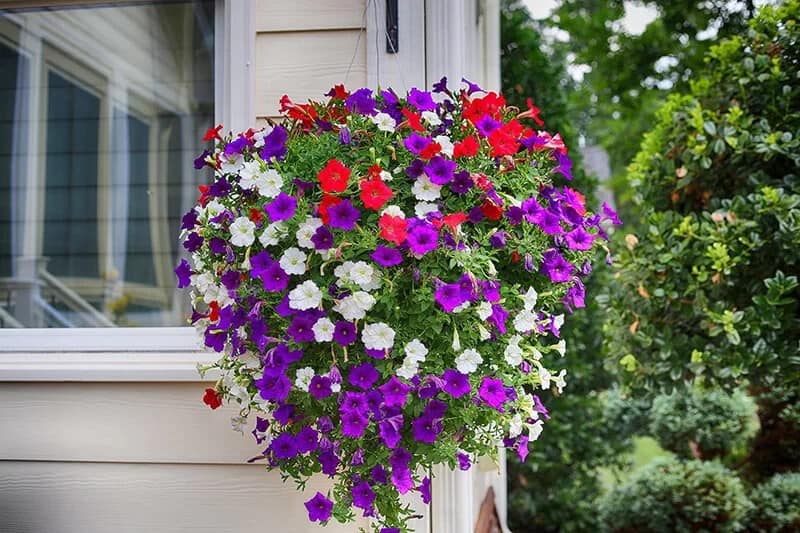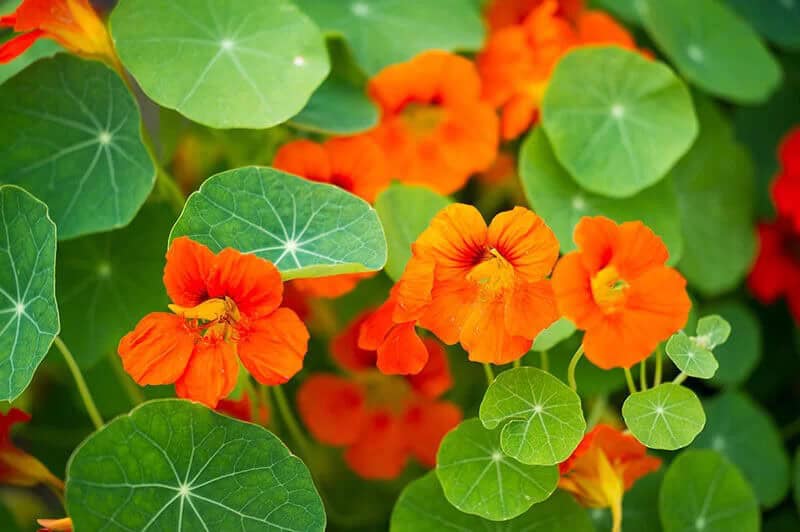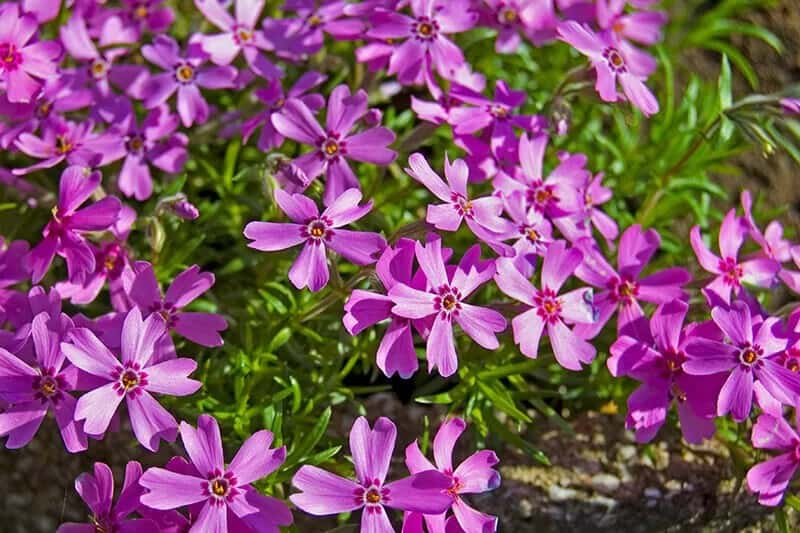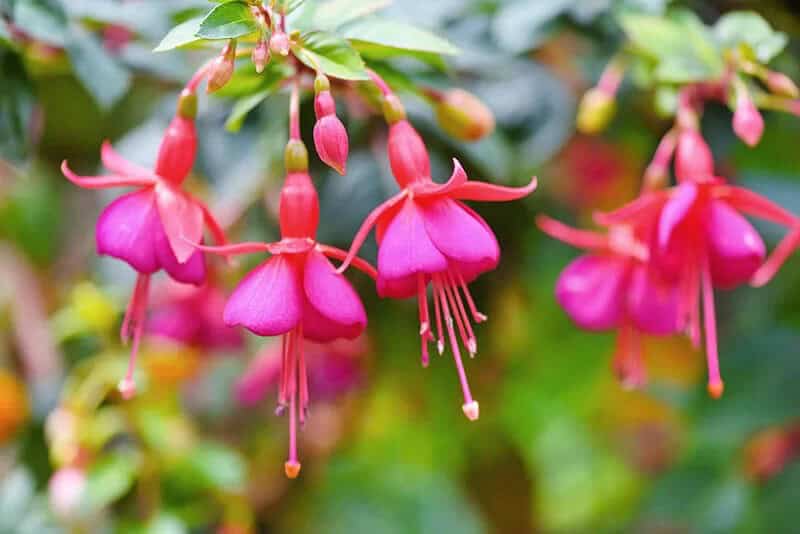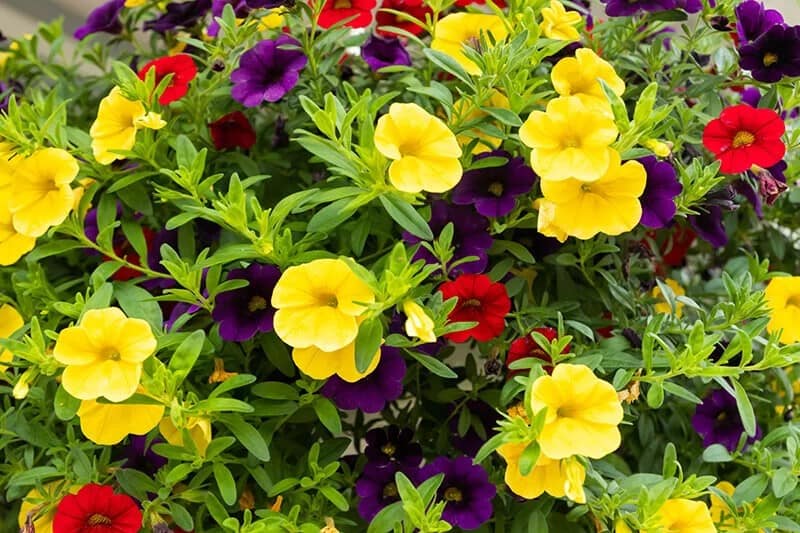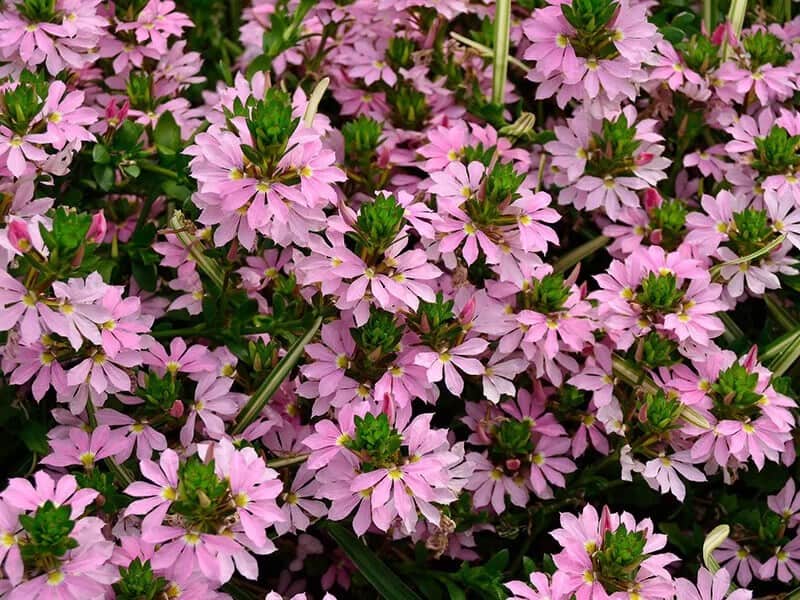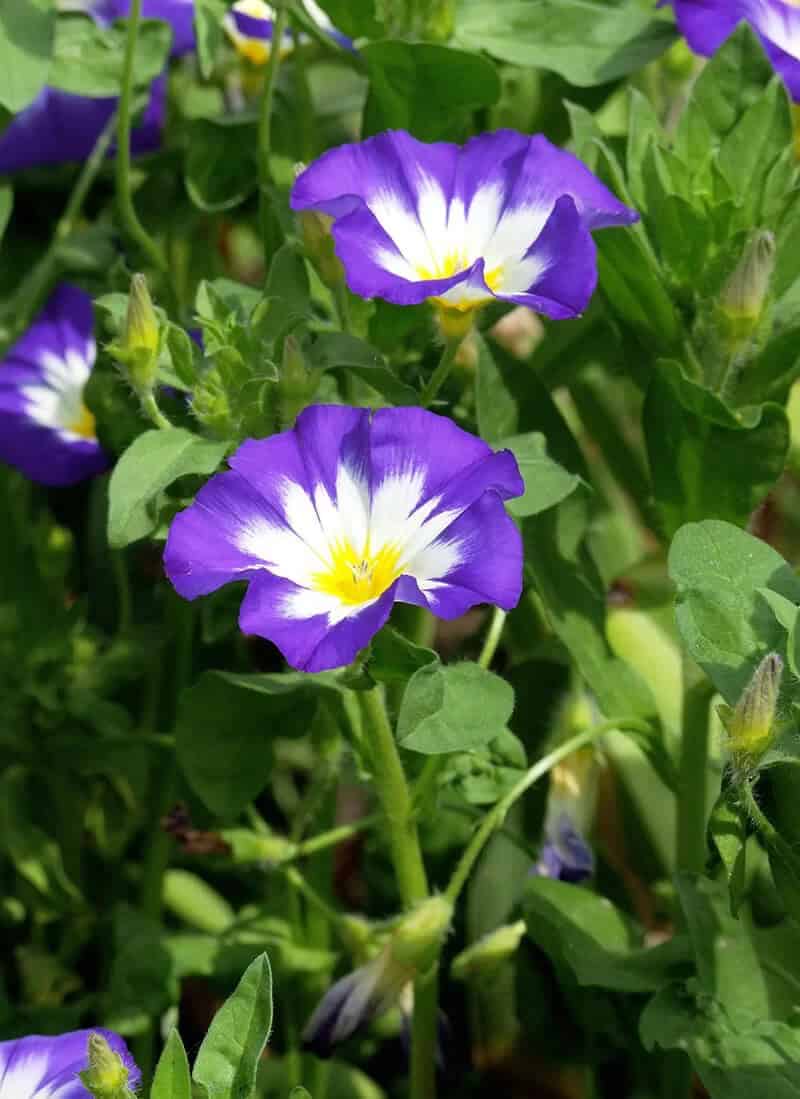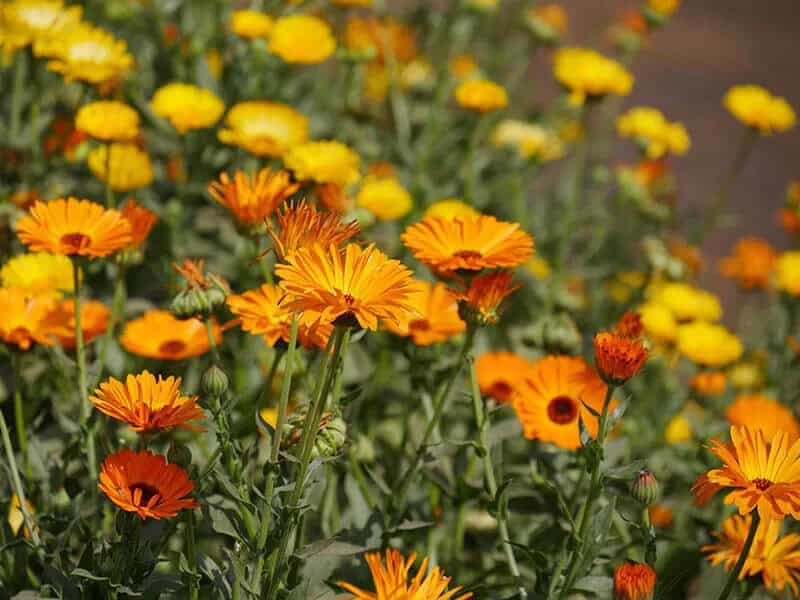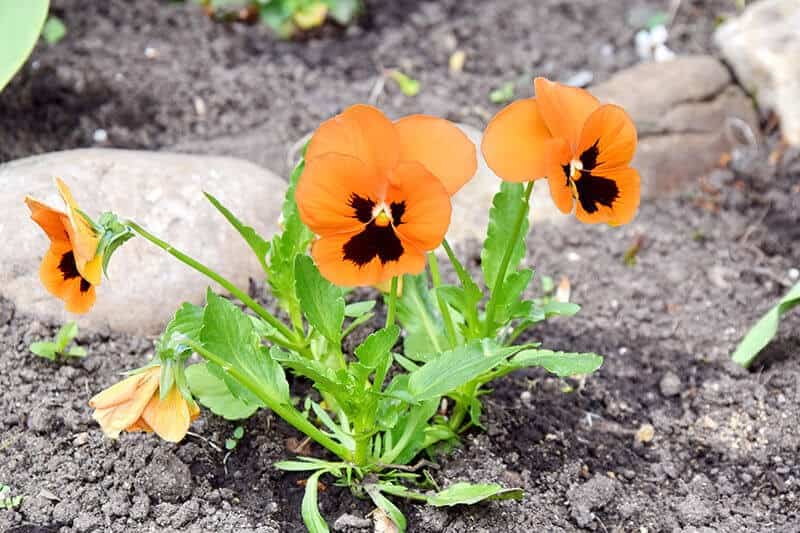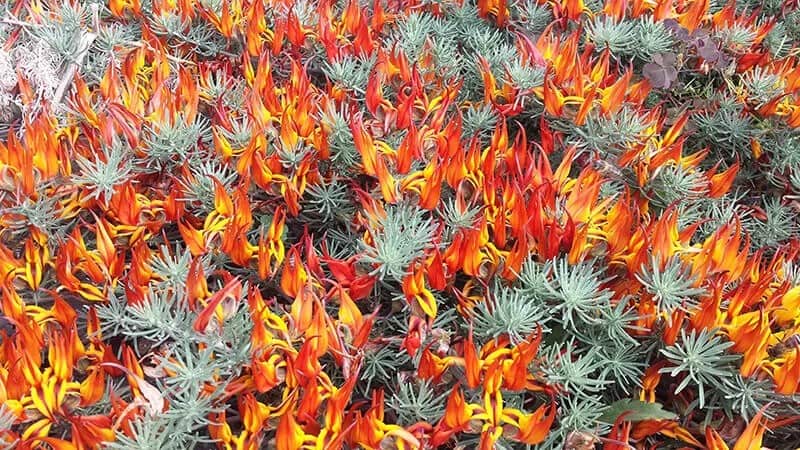Transforming outdoor spaces with hanging flowers is an art form that brings vibrancy to any garden, porch, balcony, fence, patio, or backyard. Not only do they add a pop of color and texture, but they also carry symbolic meaning, making them a unique piece of living art. Whether you’re looking to elevate the entrance, create a cozy atmosphere, or simply bring a touch of whimsy to your outdoor area, hanging flowers are an excellent way to infuse life and style into your surroundings.
27 Hanging Flowers for a Burst of Beautiful Colors
To unleash your inner creativity, try crafting unique hanging flower arrangements by wrapping vibrant yarn around wooden dowels. Let your imagination run wild and experiment with different colors and patterns. On the surface, beautifully arranged hanging flowers may appear effortless, but in reality, it often requires dedication and perseverance to find the ideal bloom for your garden or porch.
By exploring 27 inspiring ideas, you’ll be sure to spark your creative juices and bring a touch of elegance to any outdoor space.
Wax Plant (Hoya Carnosa)
Hoya plants, commonly referred to as wax plants, are a genus of flowering plants that thrive in tropical regions of China and India. Their popularity extends beyond their native habitats, with many gardeners cultivating them worldwide. As slow-growing plants, Hoyas are often showcased in hanging baskets, where they display their distinctive broad, sword-shaped leaves and flower stalks adorned with clusters of tiny, bell-shaped blooms.
The plant’s color palette is equally impressive, featuring a range of hues that can be matched to existing flowers or used as a bold statement piece. With moderate water needs, a preference for moist, well-drained soil rich in organic matter, and tolerance for full sun to part shade, Hoyas are an excellent addition to any garden, with blooming seasons spanning spring and summer.
Firecracker (Russelia Equisetiformis)

The firecracker, a flowering plant belonging to the Rosaceae family, carries symbolic significance of new beginnings or rebirth. Its moderate water needs are balanced by its ability to thrive in well-drained soil with high organic matter. A warm-weather lover, it flourishes in growing zones 9 to 11 and basks in full sun. As a shrub or small tree that can grow up to 12 feet tall, with a trunk diameter of up to 1.
5 feet, the firecracker’s striking red flowers and lush foliage make it an ideal choice for fencing and adding visual interest to bare walls. With its herbaceous nature making it easy to cultivate and maintain, this plant is perfect for those looking to add a pop of color to their outdoor spaces.
Spiderwort (Tradescantia Zebrina)
Spiderwort, a perennial flowering plant, embodies symbolism of moral authority, optimism, and immortality. It thrives in moderate water conditions, well-drained soil with slightly acidic pH, and tolerates a range of growing zones from 4 to 12. The plant requires full to partial shade, making it an ideal choice for window boxes or hanging baskets. As the name suggests, Spiderwort produces small, violet-blue flowers that bloom during spring and summer.
Its leaves are often crinkled and hairy, adding to its unique charm. One of the plant’s greatest advantages is its low-maintenance nature, making it a perfect fit for beginners looking to cultivate their green thumb.
Monkey Tail or Heliotrope (Heliotropium Arborescens)
Monkeytail, an herbaceous plant native to Asia, Europe, and North America, boasts striking deep purple flowers with a captivating fragrance, reminiscent of eternal or unfailing love. This versatile plant thrives in a range of light conditions, from full sun to partial shade, making it an excellent choice for hanging baskets. Its unique leaves are heliotropic, gradually turning towards the sun, earning its name.
With moderate water requirements and a preference for moist and well-drained soil, monkeytail is surprisingly easy to grow. It blooms in the spring and summer seasons, offering a long-lasting display of vibrant color. Whether you’re seeking a symbol of eternal love or simply a low-maintenance addition to your garden, monkeytail is an attractive and rewarding option.
Trailing Lantana (Lantana Montevidensis)
This perennial shrub, native to tropical Africa, southeastern United States, Brazil, and Uruguay, is characterized by its trailing stems and palmately lobed leaves that give rise to small, white flowers with yellow centers. When grown in hanging baskets, Trailing Lantana is a popular choice for its ability to thrive as a perennial. In terms of growing conditions, this plant requires well-drained soil that is slightly acidic, full sun to partial shade, and a zone between 8 and 12.
Its blooming season typically spans from spring through summer. Interestingly, the symbolism associated with Lantana is often tied to rigor and severity, while its water needs are relatively low.
Busy Lizzy (Impatiens Valleriana)
The Impatiens plant, also known as the Busy Lizzy, is a tropical African native that thrives in medium-water conditions with moist soil that drains well. With a growing zone of 10 to 11, this plant is perfect for warm climates. It requires deep shade to survive and produces an abundance of blooms throughout spring, summer, and fall. One of the most common types of hanging flowers, Impatiens boasts large, showy leaves and vibrant flowers that come in shades of red, purple, and white.
Not only do they add a pop of color to any room, but their sweet fragrance makes them perfect for cutting arrangements.
Signet Marigold (Tagetes Tenuifolia)
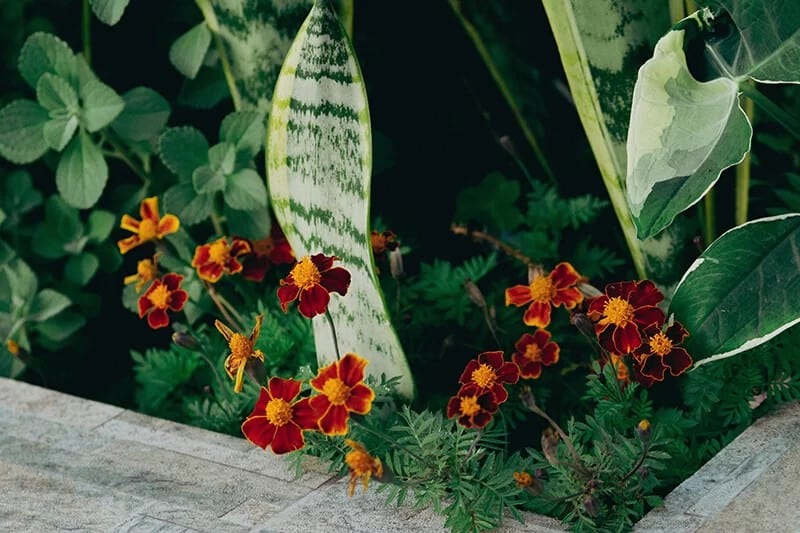
The Signet marigold, a visually striking addition to any garden, is more than just a pretty face. Its unique dense lemon yellow blooms are a beacon for butterflies, drawing them in with its sweet fragrance. But that’s not all – this versatile flower also has a practical side. When crushed, the petals can be used to add flavor and zest to salads, tea, and rice dishes. Plus, the tall stems make it an ideal choice for cuttings.
With its low water needs, well-drained soil, and ability to thrive in full sun, this marigold is a hardy addition to any garden, suitable for growing zones 2-11. Whether you’re looking to attract butterflies or add some flair to your meals, the Signet marigold is an excellent choice.
Bride’s Flower (Stephanotis Floribunda)
The Bride’s flower, also known as Madagascar Jasmine, is an evergreen vine renowned for its stunning white blooms and intoxicating fragrance. Its dark green, oval-shaped leaves offer a striking contrast against the delicate flowers, making it a popular choice for wedding arrangements. When searching for images of hanging flowers that bloom throughout the year, this beauty is often featured.
To encourage its climbing nature, some support will be necessary to help the vine twine itself around structures. The plant requires average watering, moist soil with good drainage, and full sun to thrive. Its growing zones are 10 to 11, and it produces flowers in the spring, summer, and fall seasons.
False African Violet (Streptocarpus Saxorum)
The False African Violet boasts a unique bluish hue with velvety leaves, hailing from Kenya and Tanzania. Its stunning appearance is complemented by the occasional white blooms featuring fringes of blue. This low-maintenance perennial thrives in full sun, tolerates average water needs, and flourishes on fertile, well-drained soil. With a growth habit reaching 12 inches tall, it’s ever-blooming, yet sensitive to frost during winter months.
Care must be taken to ensure the plant’s safety and well-being.
Petunia (Petunia spp.)
Petunia, a popular type of hanging flower originating from South America, is renowned for its large, funnel-shaped blooms that come in a range of colors such as red, purple, and white. These fragrant flowers are not only visually striking but also perfect for cutting. One of the unique features of Petunia is its sticky leaves, which provide natural protection against pests and insects.
When it comes to growing conditions, Petunia requires moderate watering, well-drained soil, full sun to partial shade, and thrives in zones 9 to 11. Furthermore, this versatile flower blooms throughout spring, fall, and summer, making it a great addition to any garden or outdoor space.
Ivy Geranium (Pelargonium Peltatum)
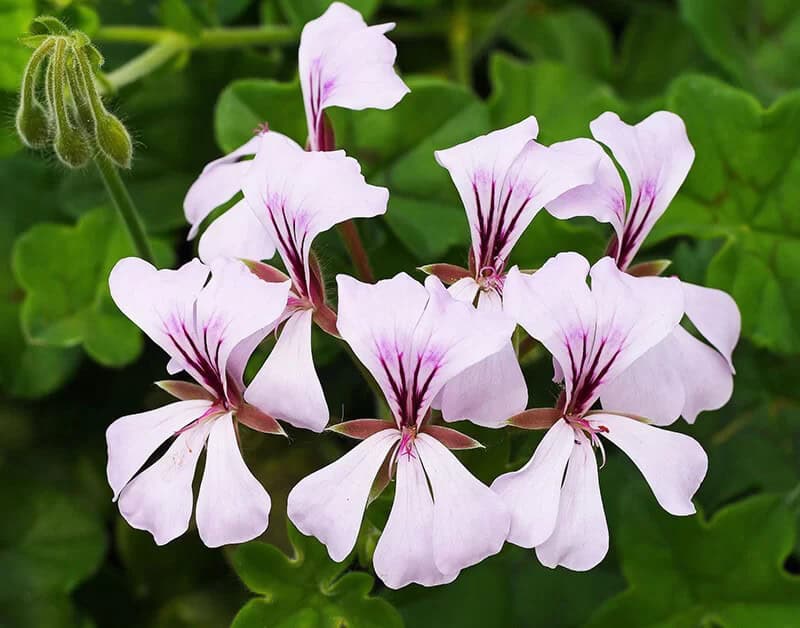
The Ivy Geranium is a sight to behold, producing stunning displays of hanging flowers in shades of burgundy, pink, red, purple, and white. The plant’s ivy-shaped leaves with shoots reaching up to two meters high create a lush, climbing effect. But what’s truly remarkable about this plant is its array of practical uses. When the stems are cut, they release an acid-like sap that can provide relief from sore throats.
Additionally, the leaves have antiseptic properties, making them useful for minor injuries, burns, and cuts. This versatile plant thrives in moderate water conditions, moist soil with good drainage, and partial shade to full sun. It’s perfect for growing zones 8 to 12, where it will bloom beautifully during the summer months.
Nasturtium (Tropaeolum Majus)
A visually striking addition to any garden, nasturtium plants are synonymous with triumph and success. With an average water requirement, these flowering wonders thrive in moist and well-drained soil, making them a great option for zones 2 to 11. Providing full sun, nasturtiums burst forth with vibrant blooms in the fall, spring, and summer seasons.
Beyond their stunning appearance, they also boast edible leaves boasting a peppery flavor, perfect for snacking or adding a burst of freshness to salads. Plus, their climbing habit makes them ideal for creating dramatic displays of hanging flowers. As an added bonus, nasturtiums are natural aphid traps, making them a valuable addition to any organic garden.
Verbena (Verbena x Hybrida)
The verbena plant, with its clusters of delicate flowers, serves as the perfect backdrop for adding a touch of elegance to walls and fences. Its symbolism is deeply rooted in themes of protection, happiness, and creating sweet memories. In terms of care, verbena requires average water needs, but excels in well-draining soil with a pH level between 6-8. Gardeners in USDA zones 9 to 11 are in luck, as this hardy plant thrives in their regions.
Verbena also boasts impressive light tolerance, tolerating full sun without batting an eye. As a bonus, it produces long periods of blooming, making it a delightful addition to any garden or outdoor space from spring through fall.
Hybrid Fuchsia (Fuchsia Hybrids)
The Fuchsia mixed flower is a stunning visual treat, boasting hundreds of colors and shades of red, white, purple, pink, blue, and white. The teardrop-shaped petals of this hanging flower are intricately convoluted, giving it a one-of-a-kind appearance. As an added bonus, the plant’s moderate water needs, well-drained soil requirements, and ability to thrive in partial shade to full shade make it an attractive option for gardeners.
When grown under ideal conditions, Fuchsia plants can bloom in as little as one season with proper maintenance and pruning.
Million Bells (Calibrachoa)
Calibrachoa’s intricate beauty is often overlooked due to its challenging name. However, this flowering annual offers a wealth of charm in its prolific, bell-shaped blooms that cascade down trails or containers with ease. As an added bonus, calibrachoa’s rapid growth rate ensures it produces an abundance of foliage as well as vibrant flowers, which can be found in a kaleidoscope of colors including white, purple, red, and orange hues.
This versatile plant thrives in conditions of full sun to partial shade, with moist, well-drained soil rich in organic matter, making it suitable for growing zones 9 to 11.
Baby Sun Rose (Aptenia Cordifolia)

The charming Heartleaf Plant ( Pixabay Photo ) is imbued with symbolism tied to good fortune and love charms. Its cultivation requires average watering, moist and well-drained soil, and a growing zone ranging from 1 to 5. The plant thrives in full sun to partial shade, with blooming seasons limited to spring and summer. Characterized by its slender leafy stem and triangular silhouette, the Heartleaf Plant’s unique features include green petals and sepal-shaped like hearts, arranged alternately.
This striking arrangement is further accentuated by a thick layer of petal-like structures. For gardeners in rainy climates or those who consistently water their plants, the Heartleaf Plant will respond with rapid growth. Notably, this plant can be easily propagated using cutting techniques, making it an accessible and manageable choice for home gardening endeavors.
Black-eyed Susan Vine (Thunbergia Alata)

The striking Black-Eyed Susan vine, also known as Excremorchis aphylla, is a native species from the south-central coast of Africa. Its unique characteristics make it an attractive addition to any garden or fence arrangement. One of its standout features is the beautiful, monochromatic flower that adds a touch of elegance to its surroundings. The plant’s sporadic nature only adds to its charm.
With its requirements for average water needs, loamy soil rich in organic matter, and full sun to partial shade, it thrives in growing zones 10 to 11. It produces vibrant blooms during spring, fall, and summer, making it a trendy choice among gardeners. Its delicate flowers and lush foliage make the Black-Eyed Susan vine a must-have for any nature lover or enthusiast.
Moss Rose (Portulaca Grandiflora)
With its striking appearance and versatility, the Moss rose has become a sought-after addition to many gardens. The plant’s unique ability to thrive in diverse conditions – from sandy soil to full sun – makes it an ideal choice for gardeners of all levels. As a symbol of love and tender feelings, the Moss rose is sure to bring joy and beauty to any outdoor space. Its delicate flowers bloom throughout the spring, summer, and fall seasons, providing a stunning display of color and texture.
Whether used in arrangements, container gardens, or as a ground cover, the Moss rose is a reliable and low-maintenance option for gardeners seeking a show-stopping addition.
Fan Flower (Scaevola Aemula)
Scaevola aemula, a vibrant and edible flower, boasts a robust flavor often used in cooking. Its small stature belies its impressive color palette, making it an excellent choice for hanging gardens or nurseries. This flowering beauty thrives in warm climates and is particularly well-suited for novice gardeners, as it’s relatively pest- and disease-resistant. With low water requirements, good drainage, and a tolerance for full sun to part shade, Scaevola aemula can be grown in zones 10 to 11.
Its blooming season spans spring, summer, and fall, offering a delightful display of color throughout the year.
Evoluvus (Convolvulus Tricolor)
The Evoluvus glomeratus flower, a perennial herb native to the Andes of South America, has gained popularity worldwide. Its strong connection to the rainforest is evident in its tropical mountain habitat. Notably, this plant produces an aromatic oil that’s utilized for crafting candles and perfumes. The flowers’ unique feature lies in their ability to bloom throughout the year, regardless of climate – be it cool or warm.
A fascinating aspect of these blooms is their three overlapping yellow petals, which take on a distinct blue hue when illuminated by blue light. Furthermore, unlike many other flowers, Evoluvus glomeratus only has two layers of petals, setting them apart from others in this regard.
Gold Coin Daisy (Asteriscus Maritimis)
Asteriscus maritimis, a flowering plant native to the western coast of North America, is an annual that thrives in the sun. As a member of the sunflower family, Asteraceae, it grows up to 30cm tall and is often found on dunes, dry areas, and coastal habitats. This dioecious plant requires careful cultivation to produce seeds and plants, as individual specimens are either male or female.
The Gold Coin Daisy’s slender stem bears narrow, lance-shaped leaves that grow in opposite pairs, while its bright yellow-orange petals surround a striking gold coin-like center. With low water needs, well-drained soil, and full sun exposure, this plant is perfect for gardeners seeking to bring some sunshine into their outdoor spaces.
Vinca Minor (Bacopa Sutera)
The periwinkle plant’s symbolism is deeply rooted in nostalgia, purity, and sadness. Its unique characteristics also make it an attractive addition to any garden. With average water needs, the plant thrives in moist and well-drained soil. It can grow in zones 4 to 9, tolerating a range of light conditions from full sun to partial shade. In terms of blooming, periwinkle plants produce vibrant flowers during both summer and fall seasons.
When it comes to appearance, the plant’s succulent, herbaceous perennial nature gives it a creeping stem that can stretch up to three meters in length. The oval or oblong leaves, measuring up to three centimeters long, have a thick leathery texture and dark green coloration. They grow out of the stem, creating a lush, bushy appearance. The violet-colored flower buds eventually bloom into tubular, bell-shaped flowers.
This flowering plant is also known as Bacopa Sutera and is commonly used in traditional Ayurvedic medicine.
Pansy (Violax x Wittrockiana)
Pansy, an open hybrid of Viola × wittrockiana, boasts long thin petals that loosely overlap at their base and a single yellow anther. Its pale green leaves support a plant that grows up to 1.5 meters in height. One of its most notable features is its longevity as a flowering plant, with blooms lasting for several weeks. This quality has made it a popular choice for cut flower arrangements, often used to add a pop of color to bouquets.
As an ornamental, pansy is widely cultivated for its striking flowers. Interestingly, this same species can be found growing wild in mountain meadows, typically thriving in rocky and creviced areas. The colors of pansies are largely dominated by shades of purple, blue, or pink, but they can also be white, yellow, or a unique combination of hues.
Begonia (Begonia)
The Begonia, an evergreen plant, thrives as a popular indoor choice due to its striking features. Its large, showy flowers come in a kaleidoscope of colors and patterns, reaching heights of approximately 1.5 meters. The plant’s leaves boast vibrant designs and hues, while the flowers bloom in early summer until frost. As a perennial, Begonia plants can live for many years, returning year after year with minimal care.
This adaptable plant requires average watering, moist and well-drained soil, partial shade, and temperatures between growing zones 9 to 11.
Sapphire Flower (Browallia Speciosa)
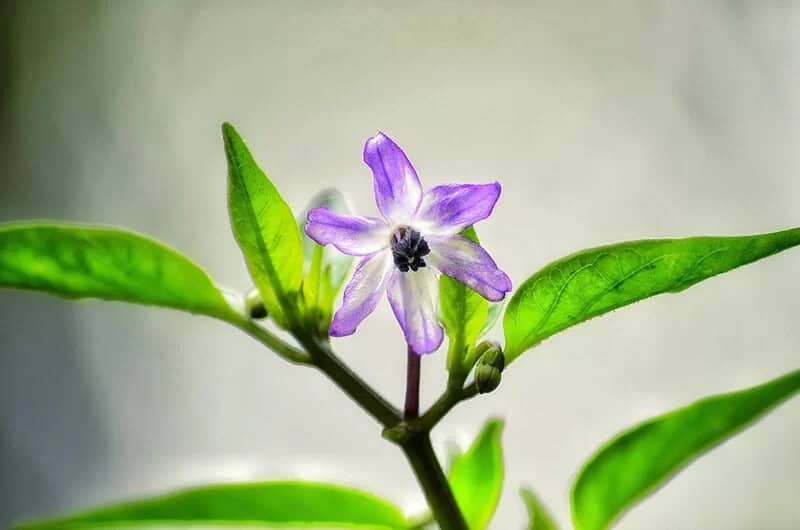
The Sapphire flower, Browallia speciosa, is a stunning rainforest dweller that thrives on the forest floor. Reaching up to two meters in length, its flowers can grow up to twenty centimeters wide. The blooms cluster at the ends of branches, producing sweet nectar that attracts butterflies and hummingbirds. Characterized by predominantly blue, pink, or purple hues, with white-to-blue centers and harmonious outer petals, this flower is a true marvel of nature.
Rocktrumpet (Mandevillla Sanderi)
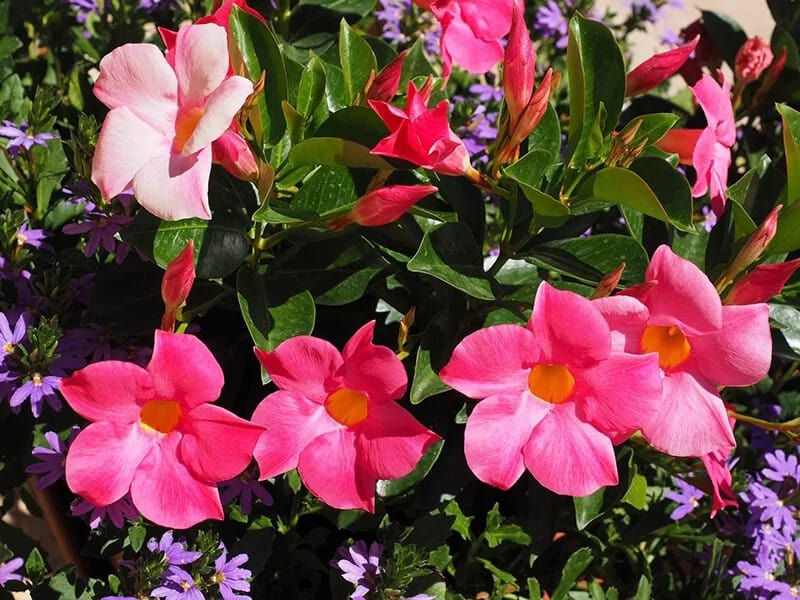
The Rocktrumpet, also known as Sander’s Mint, is a perennial herbaceous plant that can grow up to two feet tall. Characterized by its fleshy, hairless, and waxy leaves, which are arranged in opposite pairs and form a basal rosette at the base of the plant, it has a unique appearance. In its natural habitat, the leaves and stems are covered with short hairs, giving them a distinctive grey-green color.
The plant’s vibrant flowers come in shades of orange, pink, or white and are arranged in a terminal spike at the tip of the flowering stem. This perennial requires average water, moist and well-drained soil, and can thrive in growing zones 10 to 11. It prefers full exposure to partial shade and blooms throughout the spring until frost.
Parrot’s Beak (Lotus Berthelotti)
The Parrot’s Beak, also known as the Hooker’s Lily, boasts flowers that resemble a bird’s beak, earning its unique name. As a bulbous plant, it produces bell-shaped blooms with five petals, clustered at the end of each stem, reaching up to three feet in height. Notably, the Parrot’s Beak emits a strong, musky fragrance and has been utilized in traditional Chinese medicine to treat respiratory infections and fatigue.
This plant is an excellent choice for a front yard feature, though it does require consistent pruning due to its invasive nature. In ideal conditions, it thrives in zones 10 to 12, with average water needs, loam or sandy soil at a neutral pH, and full sun to partial shade. Blooming occurs primarily during spring and summer.
27 Top Picks for Hanging Flowers
Transforming your interior and exterior spaces with hanging flowers is an excellent way to inject vibrant colors and textures. These beautiful arrangements can serve as striking focal points, adding a touch of elegance to your décor. Strategically placing hanging flower pots in areas like stairwells or windows creates a lovely ambiance.
It’s essential to consider the zone-specific guidelines for selecting the perfect blooms, but it’s equally important to protect your outdoor flowers from harsh weather conditions by bringing them indoors when temperatures drop or frost sets in.


